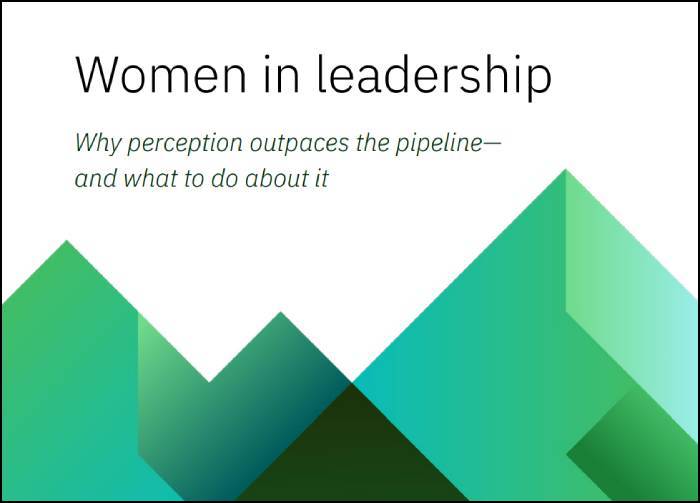
March 8 2023: India -specific findings in a global study by IBM released this week, entitled: Women in leadership, found the number of women at the C-suite ( people with ‘Chief’ in their titles and at Board level is now 13% and 14% respectively. Women in junior professional/specialist roles account for 41%. Globally, the pipeline for top leadership positions still hasn't recovered to pre-pandemic levels – 14% representation of women in senior vice president roles (18% in 2019) and 16% in vice president roles (19% in 2019).
Of those surveyed in India 39% report they have made advancing more women into leadership roles a top, formal business priorities – 6% lower than the global figure of 45%.
Women are significantly underrepresented at nearly every level of the workforce – that is the message one takes sway
"While we're pleased to see slight progress in the representation of women at the C-suite and Board levels, it's imperative that companies do more to fill the pipeline that leads to these powerful positions," says Lindsay Kaplan, Co-Founder and Chief Brand Officer of Chief, "Women are. If companies prioritize gender diversity across their entire organizations through policies, investments, and a culture that meaningfully supports women, we'll see a transformative impact — equity for everyone in the workplace and stronger, more resilient businesses."
The study also found:
Optimism is rising, but it doesn’t reflect reality: Respondents estimate their industry will see gender parity in leadership in 10 years or less, compared to 2019 when the average industry estimate was 54 years. But the reality is, at the current rate of change shown in the survey, gender parity is still decades away. In India, those surveyed are less optimistic, stating 13 years or less to bridge the gender parity in leadership role
Structural barriers and unconscious bias continue to hinder women’s advancement: Since the height of the pandemic, more organizations have implemented career development planning for women, diversity training, and the creation of women’s networking groups. However, biases persist – for example, only 41% of male managers say their organization’s leadership believes that women with children are just as dedicated to their jobs as others.
The attributes perceived as critical for leadership also remain gendered: Respondents shared men are primarily valued for creativity and being results-oriented with integrity and expected women to be strategic and bold but also people oriented. Being a ‘strategic visionary’ and ‘open and transparent communicator’ are the attributes perceived as most important for women to be promoted to a leadership position in India. For men, being ‘innovative and creative’ and ‘assertive, bold, decisive and courageous’ are the most important attributes.
The pandemic continues to have a disproportionate impact on women at work: Respondents globally and in India rank the pandemic as the most serious disruption facing women, recognition of the immense, lasting toll it has taken on them. Geopolitical unrest is ranked number two globally and locally